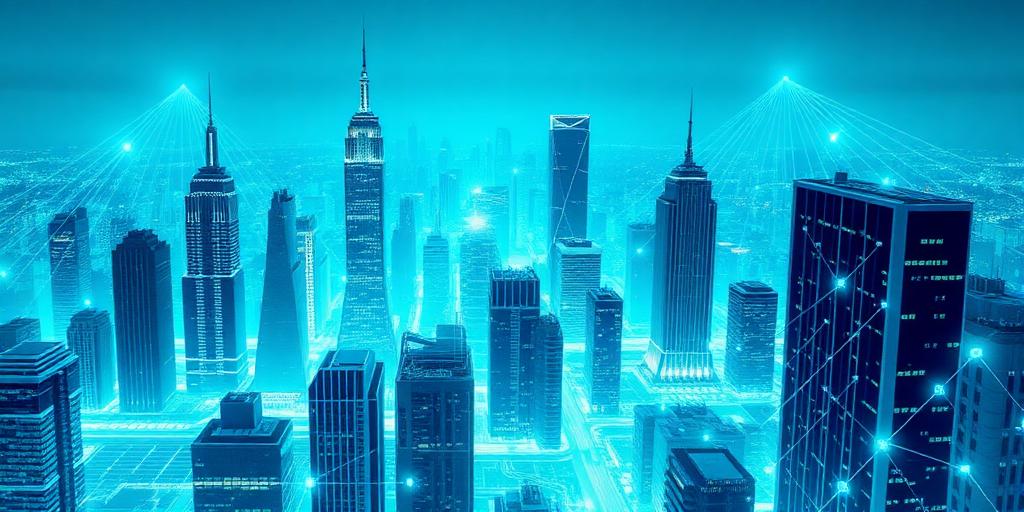The Convenience and Perils of a Hyper-Connected 2025
The year is 2025. Imagine a world where nearly every device, appliance, and system is interconnected, sharing data and automating tasks. This hyper-connected environment promises unprecedented convenience and efficiency. Yet, it also presents a unique set of challenges and risks that individuals and organizations must understand to navigate this evolving landscape successfully.
The Upsides: Convenience and Efficiency Redefined
- Seamless Automation: Smart homes anticipate your needs, adjusting lighting, temperature, and security settings based on your preferences and schedule. Imagine your coffee brewing automatically as your alarm goes off, and your car starting itself as you walk out the door.
- Optimized Resource Management: Smart grids monitor energy consumption in real-time, optimizing distribution and reducing waste. Smart agriculture employs sensors and data analytics to maximize crop yields while minimizing water and fertilizer usage.
- Enhanced Healthcare: Wearable devices track vital signs and provide personalized health recommendations. Remote patient monitoring allows doctors to intervene proactively, preventing serious health events. Surgical procedures are enhanced through robotic assistance and real-time data analysis.
- Smarter Cities: Traffic flow is optimized through real-time data analysis, reducing congestion and commute times. Public safety is enhanced through integrated surveillance systems and predictive policing. Waste management is streamlined through smart sensors and automated collection routes.
The Downsides: Security Risks and Privacy Concerns
- Increased Vulnerability to Cyberattacks: As more devices connect to the internet, the attack surface expands, creating more opportunities for hackers to exploit vulnerabilities. A single compromised device can serve as a gateway to an entire network, potentially disrupting critical infrastructure and exposing sensitive data. Think about hackers gaining access to smart grids, self-driving cars, or medical devices.
- Data Privacy Erosion: The constant collection and sharing of personal data raise serious privacy concerns. Companies track your online activity, location, and even your physical condition to personalize advertising and tailor services. Without strong regulations and ethical guidelines, this data can be misused, leading to discrimination, manipulation, and loss of autonomy. Consider scenarios where your insurance rates increase based on data from your fitness tracker, or your job application is rejected based on your social media activity.
- Dependence and Systemic Risk: Over-reliance on interconnected systems can create systemic vulnerabilities. A widespread power outage or a large-scale cyberattack could cripple entire cities, disrupting transportation, communication, and essential services. It is crucial to develop robust backup systems and contingency plans to mitigate these risks. For example, a solar flare could wipe out power to a city, and without backup plans, people would be left without basic needs.
- Job Displacement and Economic Inequality: Automation and artificial intelligence are already transforming the job market, displacing workers in manufacturing, transportation, and customer service. As hyper-connectivity accelerates this trend, it is essential to invest in education and training programs that equip workers with the skills needed to succeed in the new economy. Otherwise, the gap between the haves and have-nots will continue to widen.
Navigating the Future: A Call for Responsible Innovation
The hyper-connected world of 2025 offers immense potential, but also poses significant risks. To reap the benefits while mitigating the dangers, we need a multi-faceted approach that includes:
- Strengthening Cybersecurity: Investing in advanced security technologies, developing robust cybersecurity protocols, and educating individuals and organizations about cyber threats.
- Protecting Data Privacy: Enacting strong data privacy laws that give individuals control over their personal information and hold companies accountable for data breaches.
- Promoting Digital Literacy: Equipping individuals with the skills and knowledge needed to navigate the digital world safely and responsibly.
- Fostering Ethical AI Development: Ensuring that AI systems are developed and deployed in a way that is fair, transparent, and accountable.
- Investing in Education and Training: Preparing workers for the jobs of the future by providing them with the skills and knowledge they need to succeed in a rapidly changing economy.
By addressing these challenges proactively, we can harness the power of hyper-connectivity to create a more convenient, efficient, and equitable world for all.
